5 of the best bluebell walks in the Lake District
Published: Saturday 28th Apr 2018
Written by: The Original Cottages Team
After an unusually snowy winter, we are celebrating the emergence of a fabulous spring here in the Lake District. Around the office, herdwick lambs are frolicking and we have enjoyed swathes of glorious daffodils in the months of March and April.
Whilst the Lake District is famous for it’s daffodils, thanks to the William and Dorothy Wordsworth and a rather famous poem, in May we celebrate the humble bluebell. Also known as Hyacinthoides non-scripta, around half of the world’s population of bluebells are found in the UK. Here in the Lakes we are secretly very proud of our bluebells which in addition to providing colour to the landscape, also provide the most beautiful aroma. Did you know that the bluebell is protected in the UK and it is illegal to harvest bulbs that grow in the wild?
We have some spectacular blue bell walks in the Lake District and we'd like to share a few of our favourites.
1. Rannerdale Knotts and the valley of the bluebells
This is perhaps one of the most famous bluebell walks within the Lake District. Bluebells are mostly be found in woodland, but at Rannerdale, you will find a carpet of blue spread across an open hillside.
Such is the popularity of this spot, social media is buzzing with activity as people check on the progress of the bluebells opening. Perhaps because of their exposed location, this stunning display is brief so visitors monitor their progress in order to see them in their full glory.
Situated between Buttermere and Crummock, Rannerdale has everything you could wish for in a Lake District fell - panoramic views as well as a picturesque 'secret' valley.
There are plenty of car parks and fairly easy car parks in the vicinity.
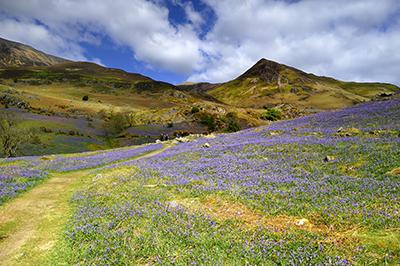
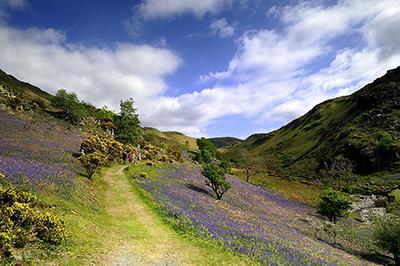
2. White Moss Wood
White Moss Wood is situated between Grasmere and Rydal Water. It has accessible pathways which make this a very family friendly walk. After visiting the woodland you can head up to Rydal Caves, another atmospheric location to visit.
Loughrigg Terrace is a well-known level path which runs across Loughrigg Fell and provides superb views of Grasmere, Helm Crag and the Fairfield group. The dip between the hills, where the road to Keswick disappears, is known as Dunmail Raise, named after King Dunmail, the last king of the ancient Cumbrians who it is said to be buried at the summit. Just below Helm Crag is Allan Bank one of Wordsworth’s homes.
On the way back you can pop into the village of Grasmere and treat yourself to some world famous Grasmere Gingerbread.
3. Skelgyhll Woods Ambleside
Skelghyll Woods is a short walk from Ambleside town centre. Aside from its bluebells, this ancient woodland is also home to some of Britain’s tallest trees, including the tallest Grand Fir in England, and the tallest Douglas Fir in Cumbria.
Walking up through the woodland and up to Jenkins Crag, there are fabulous views over Windermere. You can also wander through Stagshaw Gardens, which has lots of azaleas, rhododendrons and spring blossoms to enjoy.
4. Dorothy Farrer’s Wood
This hidden gem is a hillside wood in the village of Staveley, a lovely little village in close proximity to Windermere, with great access to the Lakes. You can read more about Staveley in our blog here.
Being off the beaten track, this bluebell wood is a little more secluded. This woodland is managed by Cumbria Wildlife Trust and is a fragrant mix of bluebells and wild garlic, early season orchids and the scarcer herb paris. Historically this wood was used for coppicing associated with the bobbin and charcoal industries. There are still remains of charcoal kilns at 5 sites around the woodland.
Bird watchers will appreciate the nature reserve in spring and early summer when you might expect to see or at least hear pied and spotted flycatcher, redstart, willow warbler, blackcap, great spotted woodpecker, nuthatch, treecreeper and buzzard.
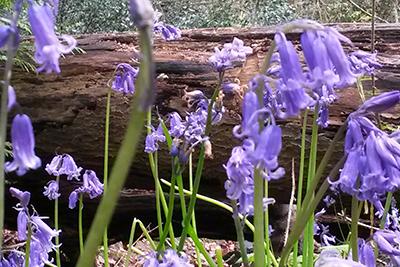
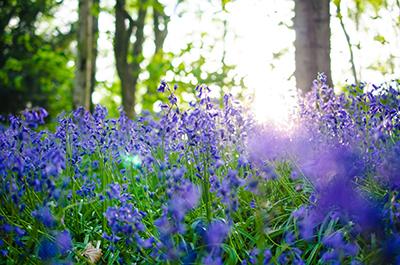
5. Humphrey Head
Another less well know location is the coastal location of Humphrey Head.
Humphrey Head is a low rocky promontory extending for about one mile into Morecambe Bay and affords excellent views out to sea. A walk here combines the contrast of a sandy beach and limestone cliffs with under an open sky to the shady seclusion of a beautifully bluebell carpeted woodland.
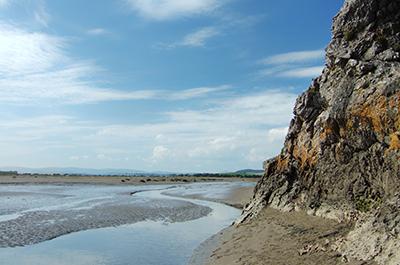
We will leave you with the words of another classic author:
‘The Bluebell is the sweetest flower
That waves in summer air:
Its blossoms have the mightiest power
To soothe my spirit’s care.’
Emily Bronte

